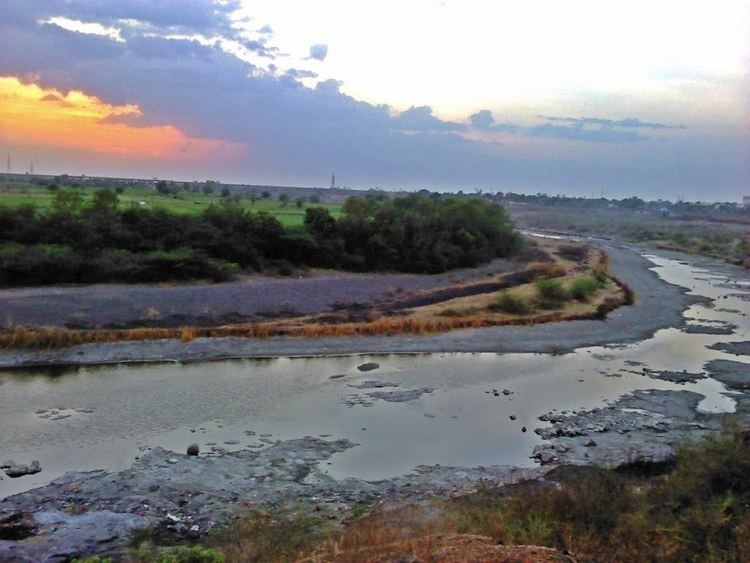- left Kinha River - elevation 407 m (1,335 ft) | - elevation 528 m (1,732 ft) | |
 | ||
- location | ||
Sindphana river flooding majalgaon dam
Sindphana is a minor tributary of Godavari river that originates around the Chincholi hill in Patoda Taluka, Beed District, Maharashtra. Crossing west to east its drainage basin covers nearly 80% of Beed District, making it the most important river within the district. The Majalgaon Dam, constructed across the river, irrigates 93885 hectares of land in Beed, Parbhani & Nanded districts.
Contents
Origin
The Sindphana rises in the Chinchol hill at the north-west apex of the Balagat plateau in the Patoda Taluka of [Beed District].
Course
From the site of origin the river flows in a northeasterly course past Amalner, a small village in the Patoda taluka. About a kilometre below Chavarwadi it makes a right-angular turn to follow a north-westerly direction flowing to Sindphana village, where the Sindphana Dam sits across the river.Here,it resumes its north-easterly course once again. After the confluence of another tributary, the Kinha, the Sindphana has a fairly long easterly course flowing alongside the villages Yelamb, Pimpari and Hirapur beyond which it is joined by one of its tributaries - Bindusara River.Its flow is interrupted by the Majalgaon Dam at Majalgaon, whereafter it flows north-eastwards and northwards to join the Godavari at Manjarath village, Pathri taluka, Parbhani District at an elevation of 407m.
Left Bank
The only important tributaries of the Sindphana on its left bank are the Ad, the Belpar and the Kinha in the western part. In the eastern part the tributaries on the left flank flowing from the north are very small sized streams.
Right Bank
There are innumerable right flank tributaries of Sindphana flowing from the Balaghat slopes, the more important of which, in order from west to east are the Uthola flowing by Raimoha, the Utawali flowing by Khokarmoha and Khalapuri, the Dombri flowing by Dombri, Ukhanda and Rajuri and joining the Sindphana opposite to Shiras marga, the Bindusara, the Takur rising on the eastern slopes of Pimpalgaon Ghat, the Pimpalner river and the Kundalika. Of these the Bendsura and the Kundalika are of considerable size and length and require some detailed consideration.
